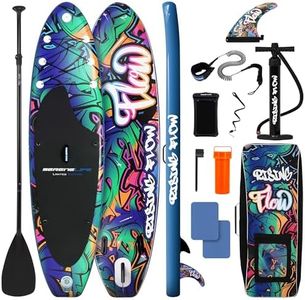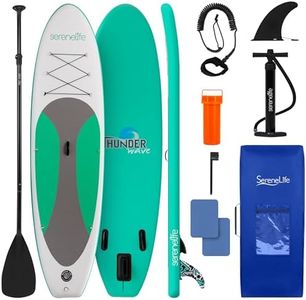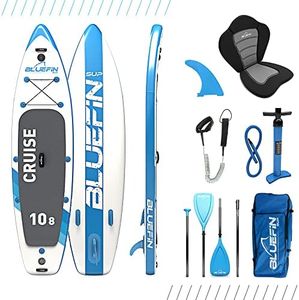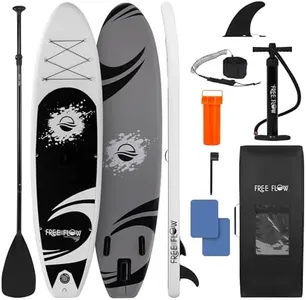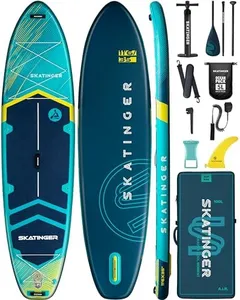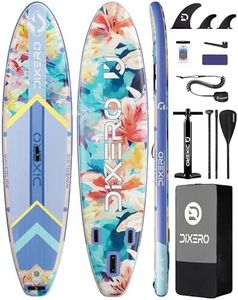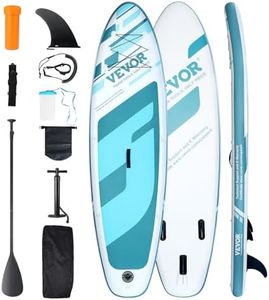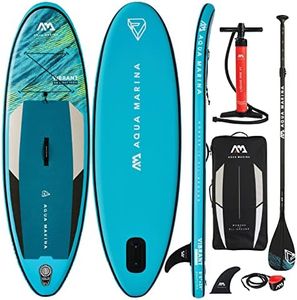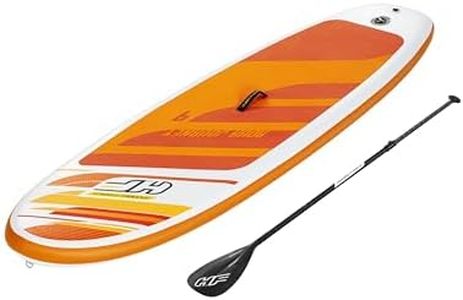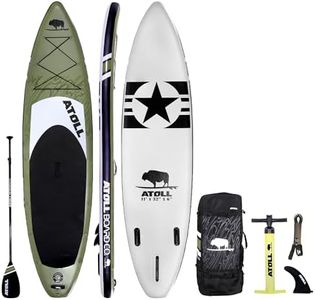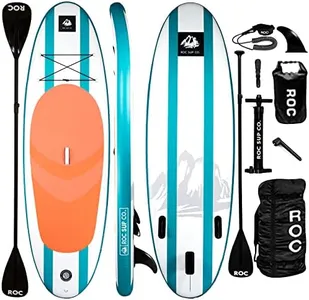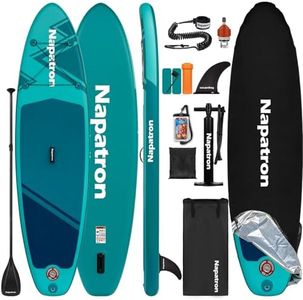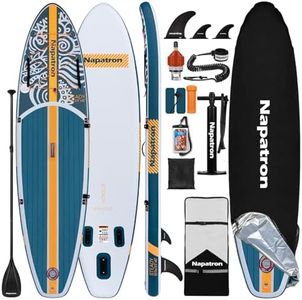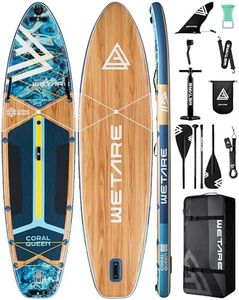We Use CookiesWe use cookies to enhance the security, performance,
functionality and for analytical and promotional activities. By continuing to browse this site you
are agreeing to our privacy policy
10 Best Inflatable Paddle Boards
From leading brands and best sellers available on the web.Buying Guide for the Best Inflatable Paddle Boards
Choosing the right inflatable paddle board is all about matching the board’s features to how and where you plan to use it. Inflatable paddle boards have become very popular because they're easy to store, transport, and set up. Before picking one, it's important to understand the different specs and features so you can find a board that feels stable, easy to maneuver, and suited to your activity—whether that's calm lake paddling, catching small waves, or even adding extra activities like yoga or paddling with a child or pet.Board LengthThe length of a paddle board affects how it moves in the water and what it's best used for. Shorter boards (around 9-10 feet) are more agile and easier to turn, making them ideal for surfing or smaller paddlers. Medium-length boards (about 10-12 feet) are versatile for general recreational paddling and work for most adults. Longer boards (12 feet and up) track straighter and glide better, making them best for touring and longer distances. Think about where and how you’ll use the board most—if you want something easy for all-around use, a medium size works; if you want speed or to cover distance, go longer.
Board WidthBoard width determines how stable the paddle board feels and how easy it is to balance on. Narrow boards (around 28-30 inches wide) are faster and better for experienced paddlers or racing, but can be tippier. Wider boards (32-36 inches or more) provide extra stability, ideal for beginners, yoga, or paddling with pets or kids. If you are just starting or want to use the board for relaxing or versatile activities, choose a wider board for comfort.
Board ThicknessThe thickness of an inflatable paddle board affects how much weight it can support and how stiff it feels. Most boards range from 4 to 6 inches thick. Thinner boards (about 4 inches) can feel less rigid and are better for lighter paddlers; they may not hold their shape as well for heavier adults. Thicker boards (5-6 inches) offer greater buoyancy and rigidity, supporting more weight and keeping you drier. Consider your weight and anything extra you’ll carry—if in doubt, a thicker board is usually safer for stability and durability.
Weight CapacityWeight capacity shows the maximum weight a board can support while performing well. It usually includes your weight plus any gear, pets, or passengers. If you exceed this, the board may sag, feel unstable, or not glide well. Always check your total load and choose a board with a higher capacity than you need for the best performance.
Fin SetupFins help a paddle board go straight and stay stable. Some boards have a single large fin, which is simple and good for calm water; others have three fins (one large and two small), which offers better control in more conditions and increased stability on waves. Removable fins are easier to travel with and can be swapped for different activities. Think about where you’ll use your board; multi-fin setups are best for varied conditions, while a single fin is usually enough for flat water.
Construction QualityConstruction quality on inflatable boards refers to the materials and overall build—look for descriptions like 'double-layer PVC' or 'drop-stitch' technology, which make boards stronger, stiffer, and longer-lasting. Durable construction is important if you plan to use the board often or in rocky areas; a more robust build means less worry about punctures or wear.
Inflation PressureInflation pressure, measured in PSI (pounds per square inch), tells you how firm and supportive the board will be when fully inflated. Most quality boards inflate to 12-15 PSI; higher-pressure boards feel stiffer and perform better but require a bit more effort with the pump. Make sure your pump and your stamina match the pressure needed for best ride quality and support.
Portability and StorageEase of carrying, deflating, and packing away determines how convenient the board is for travel and storage. Look for features like a well-designed carrying bag, manageable weight, and compact foldability. Lightweight boards are great if you need to hike to the water or pack your board in a tight space.
